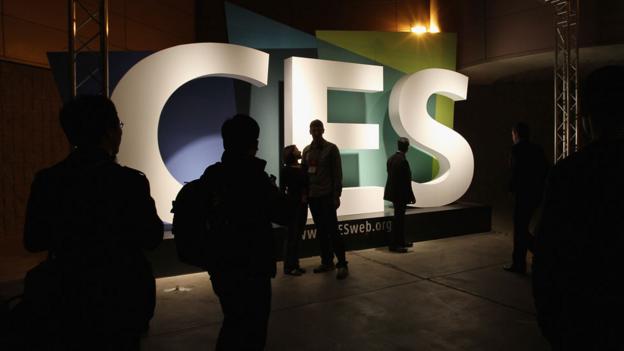 'CES:
'CES: 'This week's Consumer Electronics Show (CES) in Las Vegas is one of the world's largest showcases for new gadgets and technology. But CES veteran David Pogue wonders for how long.
It’s a golden rule in consumer technology: you can’t predict the future. Just ask the Popular Mechanics writer who said, in 1949, “Computers in the future may weigh no more than 1.5 tons.”
But 2013 presents a unique opportunity to make safe predictions. Maybe not about consumer tech, but at least about the annual trade show that celebrates it: the Consumer Electronics Show.
For years, CES was North America’s biggest trade show. It’s been running in various forms since 1967. Every January, nearly 150,000 attendees walk its 2,700 booths, then wait 45 minutes for taxis so they can return to their overpriced Las Vegas hotel rooms with aching feet.
So what’s the prediction? That CES has started a long, slow decline.
CES is not open to the public. It’s attended exclusively by electronics representatives, investors, and members of the media. Its function: for tech companies to display the new gadgets they’ve been working on - and to beg the press to write about them.
And we do. Every January, we, the press, dutifully report the industry’s latest message. This will be the year we surf the web on our TV sets! This will be the year for 3D television! This will be the year someone besides Apple has a hit tablet!
But as time goes by, it’s becoming clearer that CES isn’t serving anyone very well. Not the public, not the press, not even the manufacturers. And that is down to four reasons.
First, the elephant in the room: When 2,700 companies try to introduce new products simultaneously, they’re guaranteed to dilute the press coverage. In fact, a CES debut is the worst way to make a product announcement - you’ll be lost in the shuffle. Why not wait for a quieter week in tech, when your news has some impact?
(I can tell you firsthand how ineffective CES announcements are. In the month of December 2012, I received over 300 email pitches for products coming out at CES 2013. I write two columns a week for the New York Times. You do the math.)
iPad clones
The second worrisome sign: the big names are leaving the show. Apple hasn’t attended CES for years, preferring to announce new products when they’re ready, rather than being locked to CES’s annual January cycle. Dell’s stopped renting booths in 1997; like Lenovo (the world’s number two computer maker), Dell now sends reps only for hotel-room meetings.
And this year another major firm will be missing.
For over a decade, Microsoft not only brought a booth the size of Britain, but CEO Bill Gates or Steve Ballmer gave the opening-night keynote speech. But no longer. “Our product news milestones generally don’t align with the show’s January timing,” Microsoft said in a statement.
(And what consumer-electronics megabrand will be replacing Microsoft for this year’s opening CES keynote speech? Qualcomm, a maker of cellphone circuits. Hold on to your hats!)
Microsoft’s departure doesn’t mean the end of CES, but other companies may well follow suit.
Veteran tech reporters may remember that the biggest tech show used to be Comdex, the computer show also held in Las Vegas. But when IBM pulled out in 1998, Comdex began a long, slow decline. By 2004, Comdex was history.
A third problem: the timing is horrible. Everybody knows that in the gadget biz, you want to unveil your shiny new product just in time for the holiday shopping season. But January? You’ve barely formed your strategy, let alone polished up the new gizmos for the following Christmas.
No comments:
Post a Comment